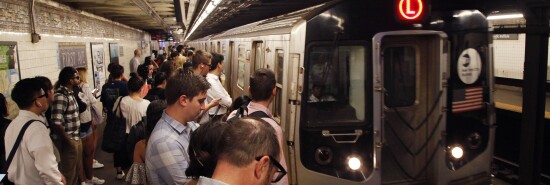
Safe subways should be an environmental and feminist priority
Tiana Lowe Doescher
Video Embed
It is entirely possible that Jordan Neely, the schizophrenic homeless man who died after accosting riders on a lower Manhattan subway car, had no intention of following through on his veiled threats that he wouldn’t “mind going to jail and getting life in prison.” It is fully possible that Neely, who had been arrested by the NYPD 42 times prior to his death last week, had no intention of punching a fellow passenger, as he had been arrested for doing four times previously.
But the question urbanists ought to be asking themselves is whether public transit users should have to deal with the likes of Neely in the first place.
DC METRO BOARD VOTES TO INCREASE FARES FOR THE FIRST TIME IN FIVE YEARS
The occupants of that subway car — which was in the D+35 monopoly of New York’s 10th Congressional District — found themselves in a worryingly common situation on urban public transit. Errol Louis over at New York magazine describes it as meeting one of the “socially dead,” a “part of an underclass that is subject to exclusion, indifference, or even outright hatred and violence.” Some of us might, far less eloquently, describe these encounters as dread or trepidation, and not due to meeting someone who happens to be homeless, but rather to being forced to keep calm when confronted with someone who acts with hatred and violence toward others.
We’ve heard the marquee headlines of women raped on the ends of subway platforms, of Asian Americans murdered as one lone stranger throws them onto the tracks. But the statistics are even worse than the stories.
New York City subway crime skyrocketed by 30% from 2021 to 2022 after it had already increased by 14% from 2020. The violent crime rate, including rape, on the NYC subway was twice as high last year as it was just before the pandemic. A total of 12 riders were raped on the subway in 2022, up from eight in 2021 and three prior to the pandemic.
Anti-gay and antisemitic hate crimes, which comprise nearly half of all subway hate crimes, were up 17% and 14%, respectively. Although Mayor Eric Adams succeeded in cracking down on a spate of anti-Asian hate crimes, which peaked in 2021, 20 Asian riders were still reported as the subject of subway hate crimes in 2022.
CLICK HERE TO READ MORE FROM THE WASHINGTON EXAMINER
All of this ignores the evisceration of polite social decorum that usually precedes the 6.4 daily major felonies that happened on the subways throughout last year. The unrelenting stench of synthetic marijuana, pointed screams and yells and threats, stalking and shoving — these are not qualities endemic to the “unhoused” or mentally ill, but rather bad behaviors that undercut a central goal of urbanism.
It will be up to law enforcement to decide whether those restraining Neely, black or white, ought to face criminal charges. But it is up to his defenders in New York City politics to decide whether it is reasonable to ask women, children, immigrants, and the elderly to cope with screaming men threatening violence against them. If liberals, especially those feminists and urbanists most concerned about changing our car-centric culture, really want Manhattan or Washington, D.C., or San Francisco to enact car-free zones the way Paris and Amsterdam have, they have a duty to make the subways livable, functional, and safe for the peaceful and the employed.
